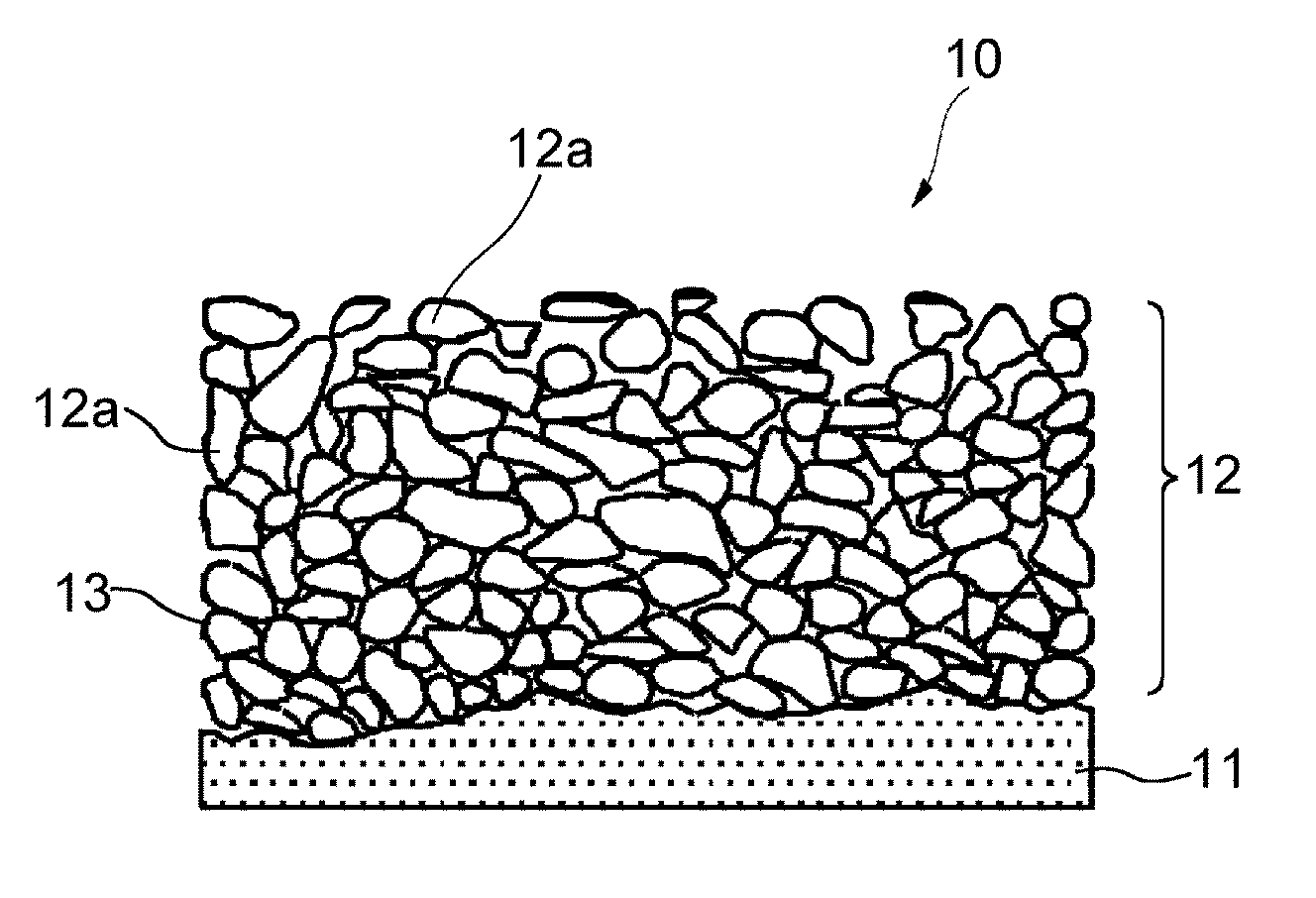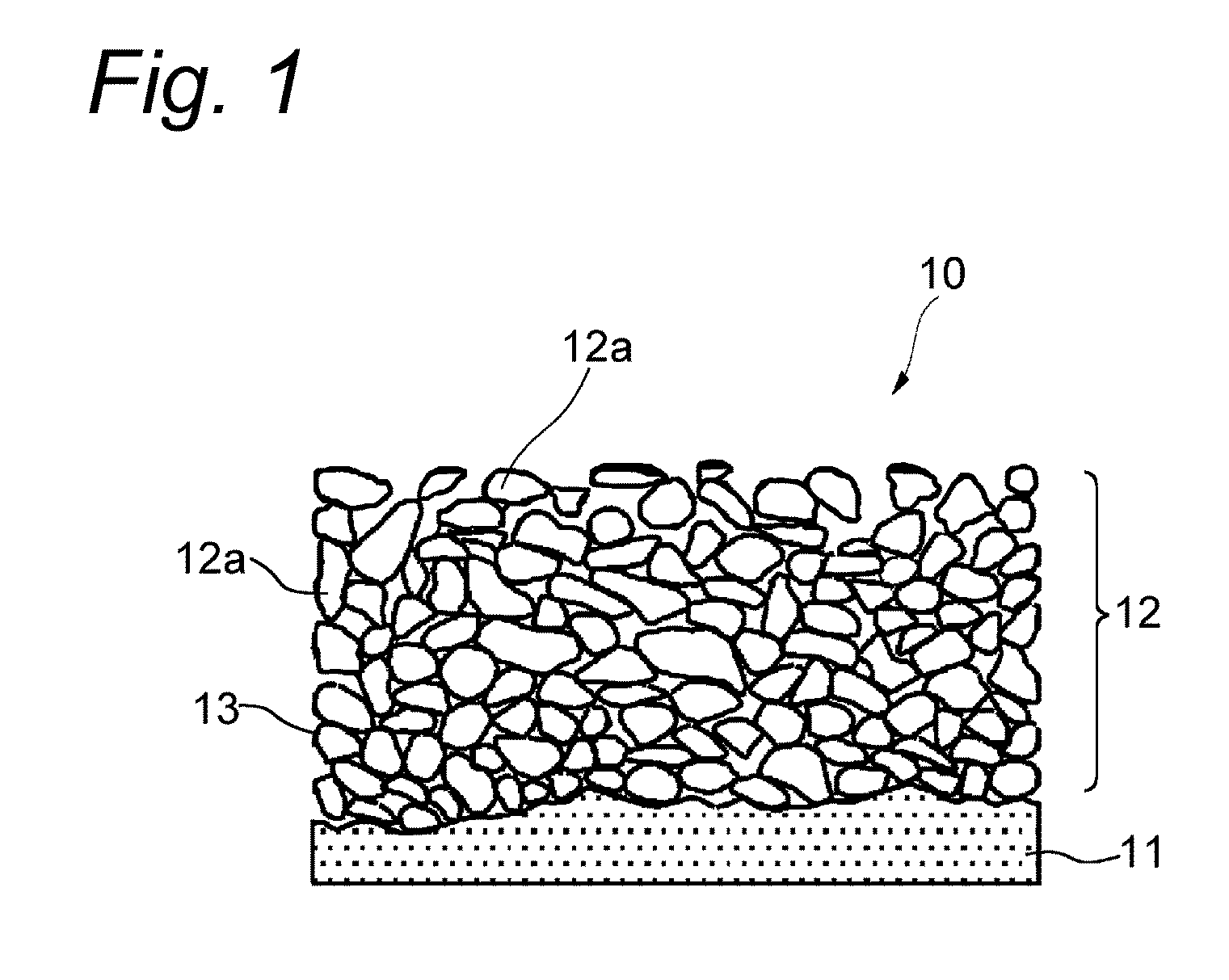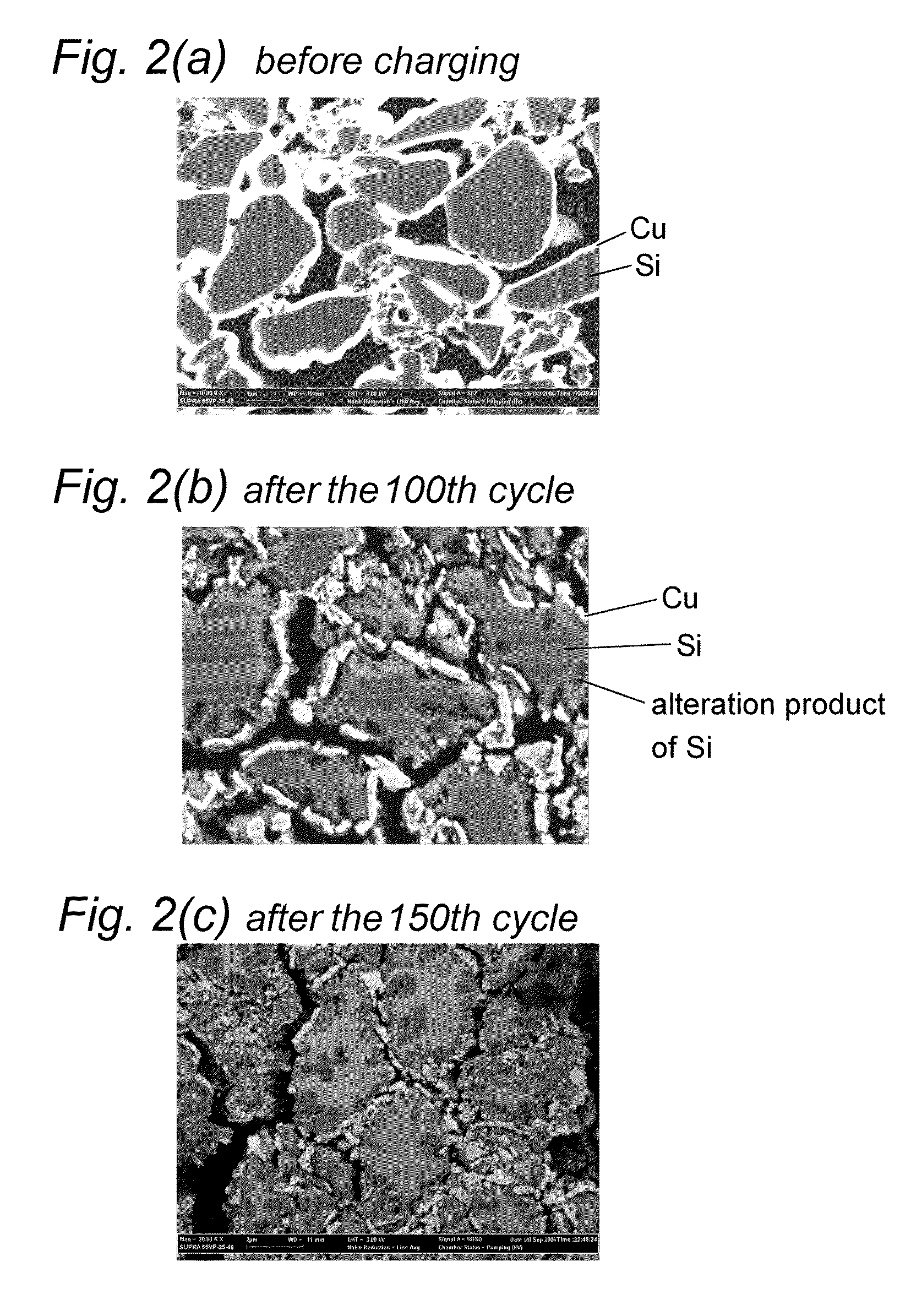Nonaqueous secondary battery and method of producing the same
a secondary battery, non-aqueous technology, applied in the direction of non-aqueous electrolyte cells, cell components, sustainable manufacturing/processing, etc., can solve the problems of non-aqueous secondary battery cycle characteristics cycle characteristics deterioration, etc., to achieve the effect of improving performan
- Summary
- Abstract
- Description
- Claims
- Application Information
AI Technical Summary
Benefits of technology
Problems solved by technology
Method used
Image
Examples
example 1
[0044]A 18 μM thick electrolytic copper foil as a current collector was washed with an acid at room temperature for 30 seconds and washed with pure water for 15 seconds. A slurry of Si particles was applied to the current collector to a thickness of 15 μm to form a coating layer. The slurry contained the particles, styrene-butadiene rubber (binder), and acetylene black at a weight ratio of 100:1.7:2. The Si particles had an average particle size D50 of 2.5 μm as measured using a laser diffraction scattering particle size analyzer Microtrack (Model 9320-X100) from Nikkiso Co., Ltd.
[0045]The current collector having the coating layer was immersed in a copper pyrophosphate bath having the following composition, and the coating layer was plated with copper by electrolysis under the following conditions to form an active material layer. A DSE was used as a positive electrode, and a direct current power source was used.
Copper pyrophosphate trihydrate: 105 g / l
Potassium pyrophosphate: 450 g...
PUM
| Property | Measurement | Unit |
|---|---|---|
| particle size D50 | aaaaa | aaaaa |
| tensile strength | aaaaa | aaaaa |
| charge/discharge rate | aaaaa | aaaaa |
Abstract
Description
Claims
Application Information
 Login to View More
Login to View More - R&D
- Intellectual Property
- Life Sciences
- Materials
- Tech Scout
- Unparalleled Data Quality
- Higher Quality Content
- 60% Fewer Hallucinations
Browse by: Latest US Patents, China's latest patents, Technical Efficacy Thesaurus, Application Domain, Technology Topic, Popular Technical Reports.
© 2025 PatSnap. All rights reserved.Legal|Privacy policy|Modern Slavery Act Transparency Statement|Sitemap|About US| Contact US: help@patsnap.com



